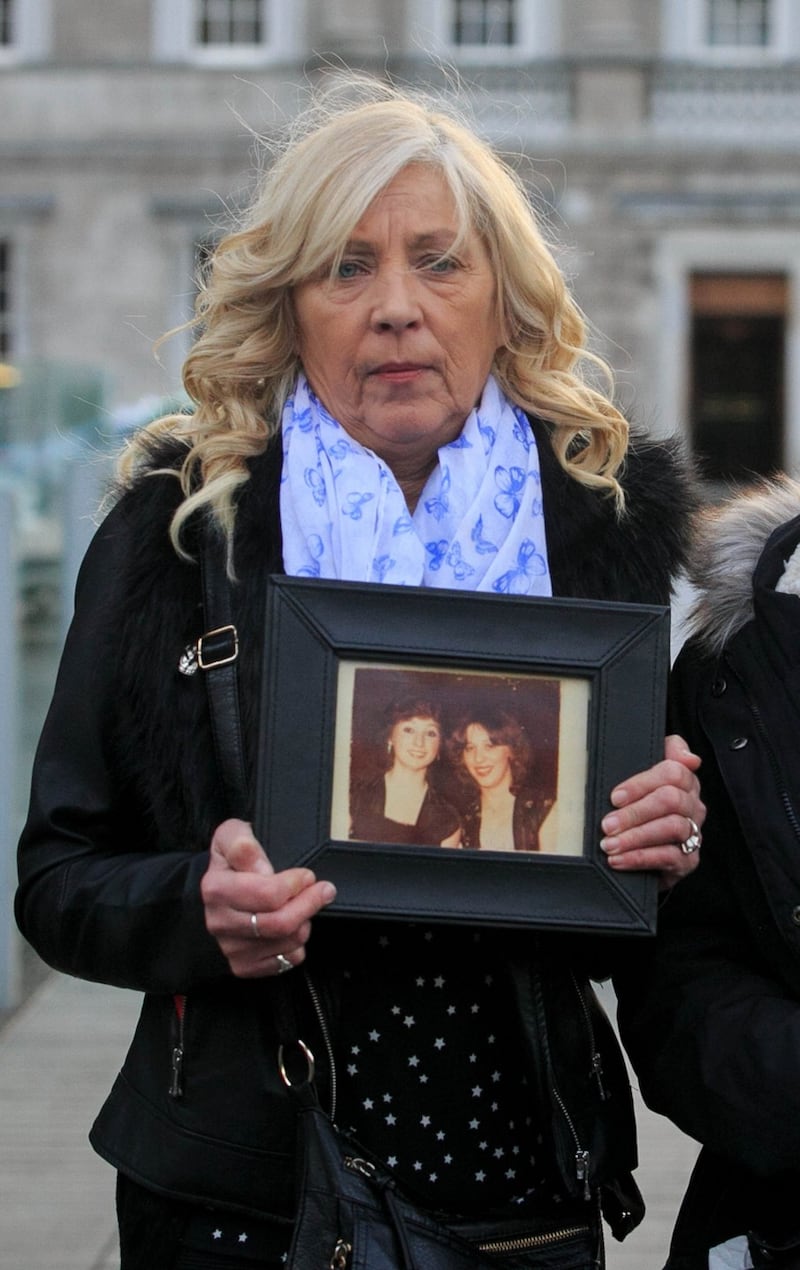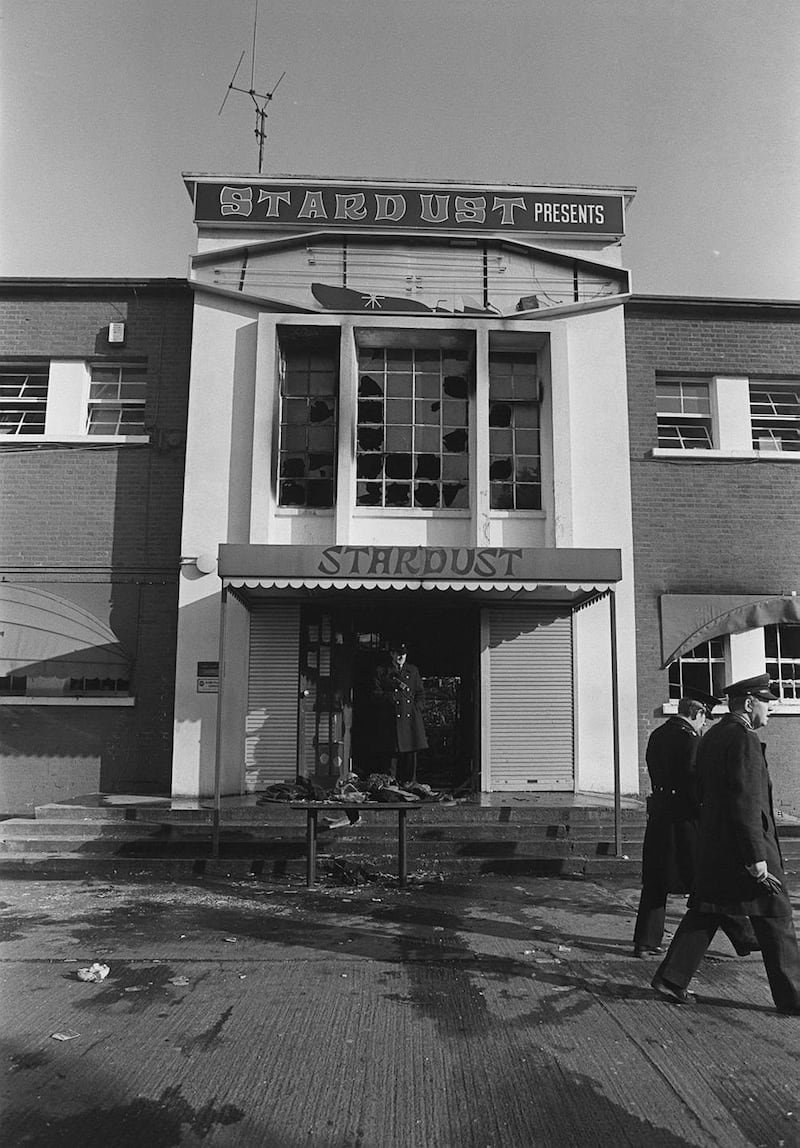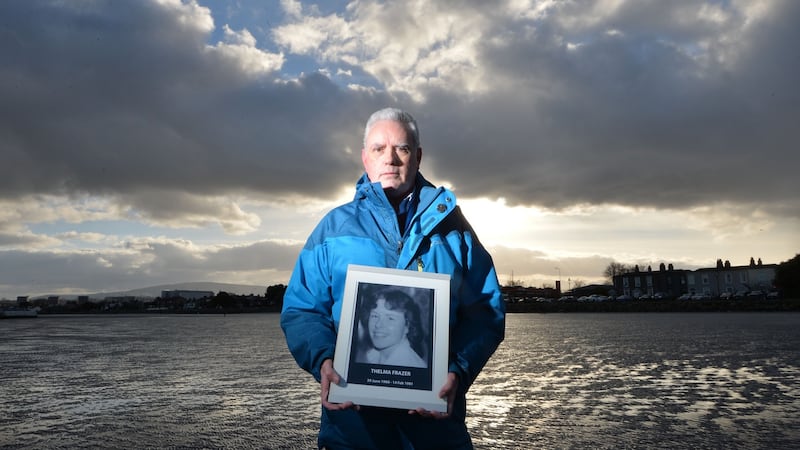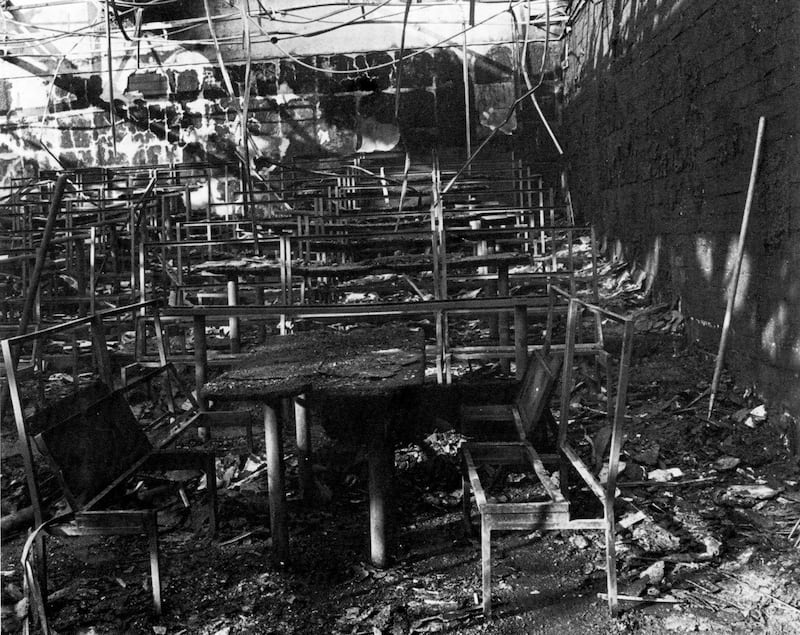A tribunal of inquiry; a victim compensation tribunal; two Oireachtas-appointed reviews; countless political promises – none has brought peace to the families of 48 young people killed in the Stardust nightclub inferno 40 years ago.
On the eve of a grim milestone, however, the families now dare to hope. Fresh inquests, ordered by former attorney general Séamus Woulfe in September 2019, are expected to open later this year.
The families of 46 of the dead are represented by Belfast-based solicitor, Darragh Mackin, who has led challenges in Northern Ireland demanding fresh investigations into legacy deaths from the Troubles.

"We are very optimistic now with Darragh on our side," says Antoinette Keegan (58) who survived the fire but lost her sisters Mary (19) and Martina (16). "We have international, independent experts and we're not relying on the State this time. The State has done nothing but block us, but not any more."
The fire which engulfed the popular Dublin nightclub, in Artane north Dublin, in the early hours of February 14th, 1981 remains one of the worst disasters in the history of the State, killing 48 people aged between 16 and 25, and injuring over 200.
The majority were from the nearby working-class areas of Artane, Coolock, Donnycarney and Beaumont, with others from Sandymount, Belfast and Derry.
A tribunal of inquiry, convened under the chairmanship of Mr Justice Ronan Keane within three weeks of the blaze, sat for 122 days hearing from 363 witnesses.
Though it criticised Dublin Corporation (now Dublin City Council) for failures around enforcing building regulations; the Department of the Environment for inadequate fire-prevention services, and Stardust owner Eamon Butterly for "recklessly dangerous practice" as some fire exits had been locked or obstructed, no one was charged in relation to the disaster.
No one lost their job over it. No one has apologised to the families.

Insufficient basis
The tribunal found the fire had started on a seat. There was no evidence as to how it started, it said, but the “probable cause” was “arson”. Its conclusions deepened the families’ grief, besmirching as they did their loved ones’ reputations and meaning Mr Butterly could claim £580,000 compensation for malicious damage.
Following relentless campaigning, spearheaded first by the late Christine and John Keegan – Antoinette's parents – a compensation tribunal was established in 1985, at which families had to waive their right to pursue any further legal action. Mr Keegan died in 1986.
Ongoing campaigning, led by Ms Keegan and Antoinette led to the appointment in 2008 of Paul Coffey SC (now a judge) to review new evidence gathered by the families, pointing they said to the fire starting in a roof-space store room filled with combustible materials. Though the arson finding was formally removed from the public record in February 2009 no new inquiry was established.
Similarly, a 2017 review by retired judge Pat McCartan found insufficient basis for a new inquiry. His report strongly criticised the families’ researcher calling her presentation, “rambling, argumentative, disorganised and at times incoherent”.
It seemed to many the McCartan review was the end of the line for the families. It was however the point at which many, who had either drifted away from the campaign or had never been involved, joined the campaign’s ranks.

Samantha Curran (44) was four years old when her single mother, Helena Mangan (22) went out the night of Friday, February 13th, 1981. The pair had shared a room in her grandparents' house in Coolock.
She says she was “protected” from even the mention of Stardust growing up though describes a constant ache for her mother. “I knew in reality she was dead, but my way of coping I think was to tell myself she was coming back.
“I was afraid of how sad people were, so I wouldn’t let them see how I was hurting because I didn’t want to hurt them. I remember as a child, from maybe 10 up, praying to God, ‘If you let her come back you can take me so everyone could be happy’. It was a constant longing for her to come back.
“I held on to that until I read her coroner’s report three years ago. Only then I think was ready to accept, ‘She’s not coming back’.
“As much as my mam was always a name in the Stardust, I had never felt she was a person in the Stardust. When I go now to the campaign meetings now with the other families I know this is where I am meant to be, I have to give my mam a voice, and I am with people who feel the same hurt and want the same answers.”
Body parts
Maurice (81) and Phyllis (81) McHugh were in Manchester for a wedding when they got word early on Saturday morning “there had been an awful fire in Dublin” and their only child, Caroline (17), was missing.
“We believed after the government was going to assist us,” says Maurice. “We were delighted a tribunal was being set up, but the arson finding was dreadful. Then, I used to go to all the Stardust relatives’ meetings at the beginning, but it was more arguments than anything so I sort of backed away. We just got stuck into our jobs. I worked seven days a week, didn’t want to come home at night.
“We both retired about 11 years ago and every so often Chrissie Keegan or Antoinette would phone here, ask us to come down to the meetings. But there was too much hurt involved in going. Then, about three years ago we said we’d go down and see, and ended up on the campaign committee.”
They never saw Caroline after she died, advised to “remember her as she was”. She was identified using dental records.
“Her hair was gone, her legs were burnt away and her arms too. There was only her torso left, so we often wondered what happened to the rest of her limbs. We heard afterwards missing body parts were just thrown under the stage,” says Phyllis.
“We want the truth now: Why were our children brought into a fire trap and left in it with the doors locked? Someone knows. Why won’t they tell us?”

Maurice Frazer (62) lost his sister Thelma (20), to whom he had been "very close". They loved travelling from their home in Sandymount across the city to family in Donnycarney, and had many "very good times" in the Stardust.
Thelma died along with her boyfriend, Michael Farrell (25). Maurice's parents died within 11 years of Stardust, both aged 56. "I firmly believe they died of broken hearts . . . My dad could never accept the arson finding. He had so many questions that were never answered.
“Around the 20th anniversary I decided I had to get justice for Thelma, and for my parents.” He has been prominent in the campaign since.
Guilt
Errol Buckley (58), who won the dance competition in the Stardust that night, lost his brother Jimmy (23) and close friend, Michael Griffiths (18).
"I felt huge guilt. I blamed myself, saying 'If I wasn't dancing we wouldn't have been there'. A year later I went to England for a year, then to America for seven years. Every time you walked down the road here it was there, just went on and on, like it was closing in on you. It was too much."
"My mother was gutted over it, her first son dying. She always just wanted the truth. She stood with placards on the campaigns. What did happen that night? How did it go on fire? Why did it spread so fast? Was it electric? Was it the kitchen?" Elizabeth Buckley died in 2006 aged 83.
Antoinette Keegan, her brother Damian (44) and sister Lorraine (53) describe the past and ongoing torment.
“I only came on to the campaign when my ma got sick a few years ago,” says Damian. “I would have loved to see her get justice. I lived in the house with her when I was in my 20s. Some nights I’d come in and I’d hear her crying, sitting on her bed looking at photographs.”
His overriding emotion now is anger. “The way I feel, whoever was responsible for the fire was protected. Politicians? I hate them. They just keep pushing it off and pushing it off, hoping we’ll just pass away. They turn up at our funerals. What use is that?”
Antoinette describes her guilt that she survived the fire; other patrons’ guilt that they were smoking at the dance; her mother’s guilt that she had argued with her husband to let the girls go that night.
“There was so much guilt and hurt and anger. The powerful people used that, assumed we were too poor, too uneducated and that we’d just go away.”

Culpability
Mackin, who was introduced to the families by Senator Lynn Boylan, describes the forthcoming inquests as the "vehicle to establish the truth".
“For the families, this is the last chance,” says Mackin. “It’s absolutely imperative the preparation is done so when the inquests begin the families get absolutely everything from the process they are entitled to. It can’t be another failed investigation and we are confident that it won’t be.”
In a highly significant move, at the next preliminary hearing he will ask Dublin coroner Dr Myra Cullinane to apply the European Convention of Human Rights (ECHR) to the inquests. Though applied in inquests in the North, and notably in the two-year inquest into the 1989 Hillsborough disaster, which returned a verdict of "unlawful killing" in 2016, it would be a first in this jurisdiction.
It would engage the 48 victims’ right to life in the proceedings, mandating that the State’s and other actors’ responsibilities to protect that be considered. While inquests are tasked with establishing the facts – the who, the when, the how of a death – it may not look at why or point to culpability.
Engagement of the ECHR, however, says Mackin, “makes a big difference to the definition of ‘how’ in an inquest. It obliges the inquest to identify any wider circumstances of the death or deaths, and consider these in the context of the right to life.
“A narrative verdict from the coroner can be more judgemental than in an ordinary inquest, can identify failings or breaches of the right to life, including to have that right protected.”
‘Silver lining’
Though the Keane inquiry and the Coffey and McCartan reviews disappointed, a “silver lining” says Mackin is that the evidence at the time was well-documented.
“Extensive paper work was kept and retained in a proper fashion which isn’t always the case in historic investigations.”
Specialist teams are going through documentation and among expert witnesses called will be fire specialists involved in investigating the 2017 Grenfell tower-block fire in London and the 9/11 terrorist attacks in New York.
Asked about after the inquests he says: “If they point to culpability in any shape or form then a further step down the road would be that those responsible should be held to account.”
Each of the families who spoke to The Irish Times describe their gratitude for the tenacity of Antoinette Keegan and her mother, Christine (85), who died last year.
They, supported by Maurice Frazer and Gertrude Barrett who lost her son Michael (17), kept the tragedy in the public consciousness.
“There were times when I did turn around and say, ‘Ma we are banging our head off a brick wall. We need to forget about this’”, says Antoinette. “She’d say, ‘No. They were our beautiful daughters, they were ours and they were taken. I will not be told to forget about this’. And of course then, I promised to stand by her 110 per cent.
“I am glad now she had the push that she gave me that drive . . . If it had not been for my ma there would be no inquests.”
A spokesman for the Department of Justice said Budget 2021 had allocated €8 million for the Stardust fire inquests, to take place at the RDS. “The department is aware the coroner has certified applications for legal aid from the families of those who died in the Stardust fire. The department continues to engage in this matter to ensure the families have the support they require.”









